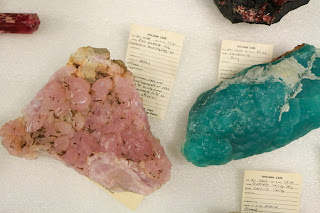I’ve recently read two super interesting books that need to be shared.
First: “The Eternal Frontier: An Ecological History of North American and its Peoples,” by Tim Flannery. It really is an ecological history, a history of life, the universe, and everything since that fateful day 65 million years ago when the Chicxulub asteroid fried the whole of North America. The only plants that survived were sheltered at the North Pole or in the lee of the Sierra Nevada and Appalachian ranges. The only animals that survived were little burrowing land critters and little river water critters. Then starting 60 million years ago, species—mammal, bird, plant, insect, etc.—started migrating into and out of the continent via Beringia (from Siberia) and via Greenland (from Europe); and later via the isthmus from South America. Some species even immigrated, evolved, emigrated, evolved, and immigrated back. (“A 60-million-year tradition of immigration has brought almost everything—from elephants to Italians—to North America.”) Humans immigrated across Beringia around 13,200 years ago, and at the same time many species of cool megafauna went extinct (mammoth, mastodon, ground sloths, giant short-faced bears, glyptodonts [those armadillo-things the size of a VW Beetle], wooly rhinos, etc.). The extinctions may have been related to climate change, but hunting by humans certainly didn’t help the situation. Hunting pressure caused a rapid and dramatic evolution of bison from Bison priscus (big solitary browsers with straight horns) to Bison bison (smaller herding grazers with curved horns for crashing heads with other bulls, and with a bigger hump as counterbalance to the head always on the ground grazing). The only really successful groups of animals that evolved in North America are the canids, camels, and horses. (Horses evolved here, migrated to Eurasia, went extinct here, then were brought back by European colonials.) Those three—canids, camels, horses—all evolved to deal with sub-optimal environments (horses can eat poor-quality roughage, camels conserve water, and canids live in a pack that communally raises the pups of the alpha pair).

 |
| Titanis: 1-2 million years ago this super-scary bird stalked North America: 3 meters in height, 400 kg in weight, and with wings that “had re-evolved an opposable ‘thumb’, which was evidently used to grasp struggling prey.” |
Second: “Fossil Legends of the First Americans,” by Adrienne Mayor. The general assumption in society and in academia is that dinosaurs and other extinct species were “discovered” by (white, East Coast, male) scientists, just as America was “discovered” by Columbus. Of course, Native American populations had long since discovered the fossils and investigated them, recognizing their anatomy better than most people, and developing stories to explain their existence. The Zuni recognized that mosasaurs and ammonites clearly demonstrated a watery “days of the new,” which was followed by geological and climatological change to dry land. The Utes right here in Utah called trilobites “little water bugs in stone,” perceiving they were extinct water creatures. In many cases, even as “Pre-Darwinian” cultures, they figured out the significance of fossils in demonstrating deep time, evolution, extinction, climate change, catastrophism, etc. For example, bones of the extinct Pleistocene bison and beaver (both much huger than present versions) were recognized as a “grandfathers” of modern bison and beavers. Ancient beavers (Palaeocastor) dug spiral-shaped burrows: white scientists were befuddled and called them “devil’s corkscrews” but Native viewers called them beaver’s lodges. Mammoth and mastodon bones are often found associated with eroding river beds, so they were thought to be water monsters, but definitely four-legged mammalian water monsters, not sea serpents or the like, because the indigenous folks understood anatomy.


































